- seelej's home page
- Posts
- 2011
- 2010
- December (2)
- November (3)
- October (3)
- September (3)
- June (2)
- May (3)
- April (2)
- February (9)
- January (1)
- 2009
- December (1)
- October (3)
- September (4)
- August (1)
- July (1)
- June (6)
- May (1)
- April (4)
- March (5)
- February (1)
- January (4)
- 2008
- My blog
- Post new blog entry
- All blogs
Relative Luminosity Studies - III
From my last blog entry you can see that even with the accidentals/multiples corrections that the asymmetry in the bbcx/zdcx R's still persists. In an attempt to look for a source of this shift I decided to broaden my search among the scalers to understand what is going on. So next I plot the delta-R's in timeseries for all the zdc scalers (that is zdcx, zdce, and zdcw) with the bbcx scalers.
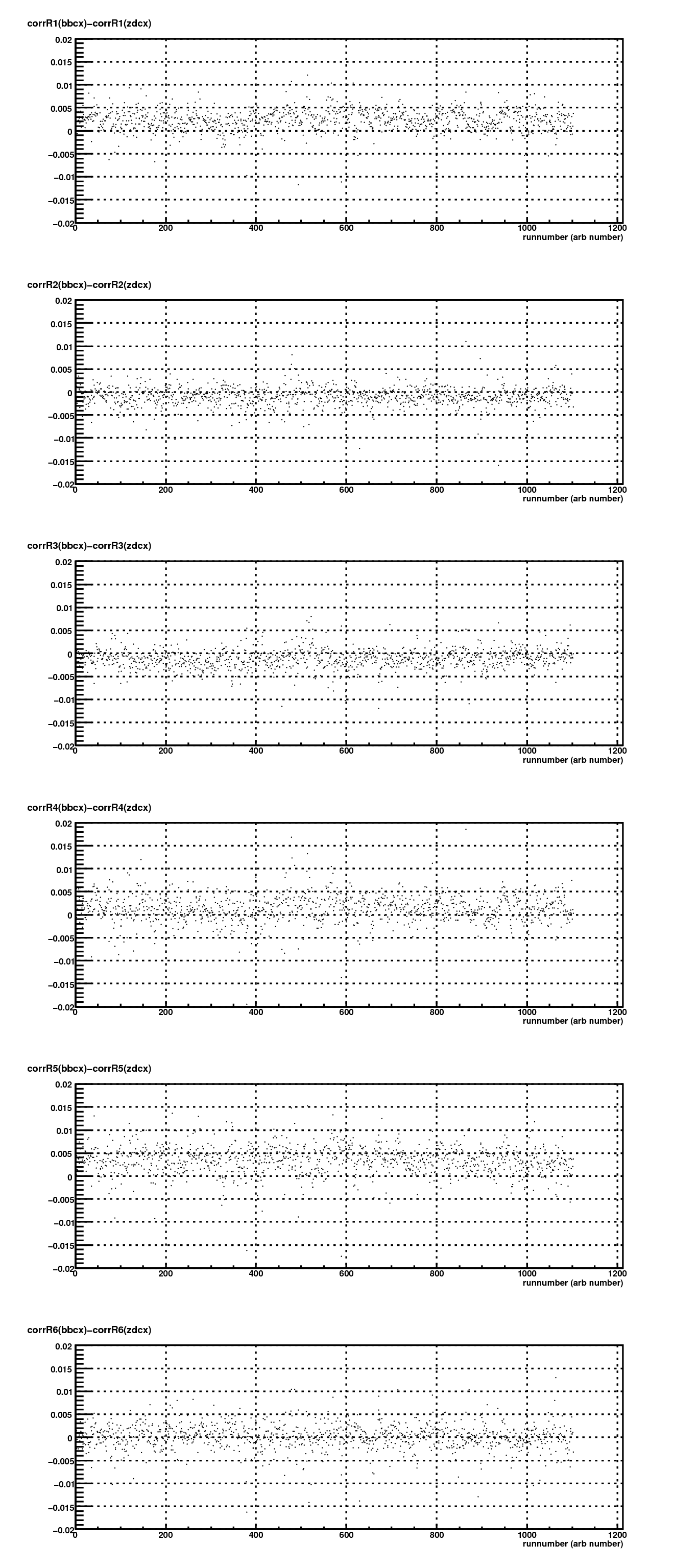

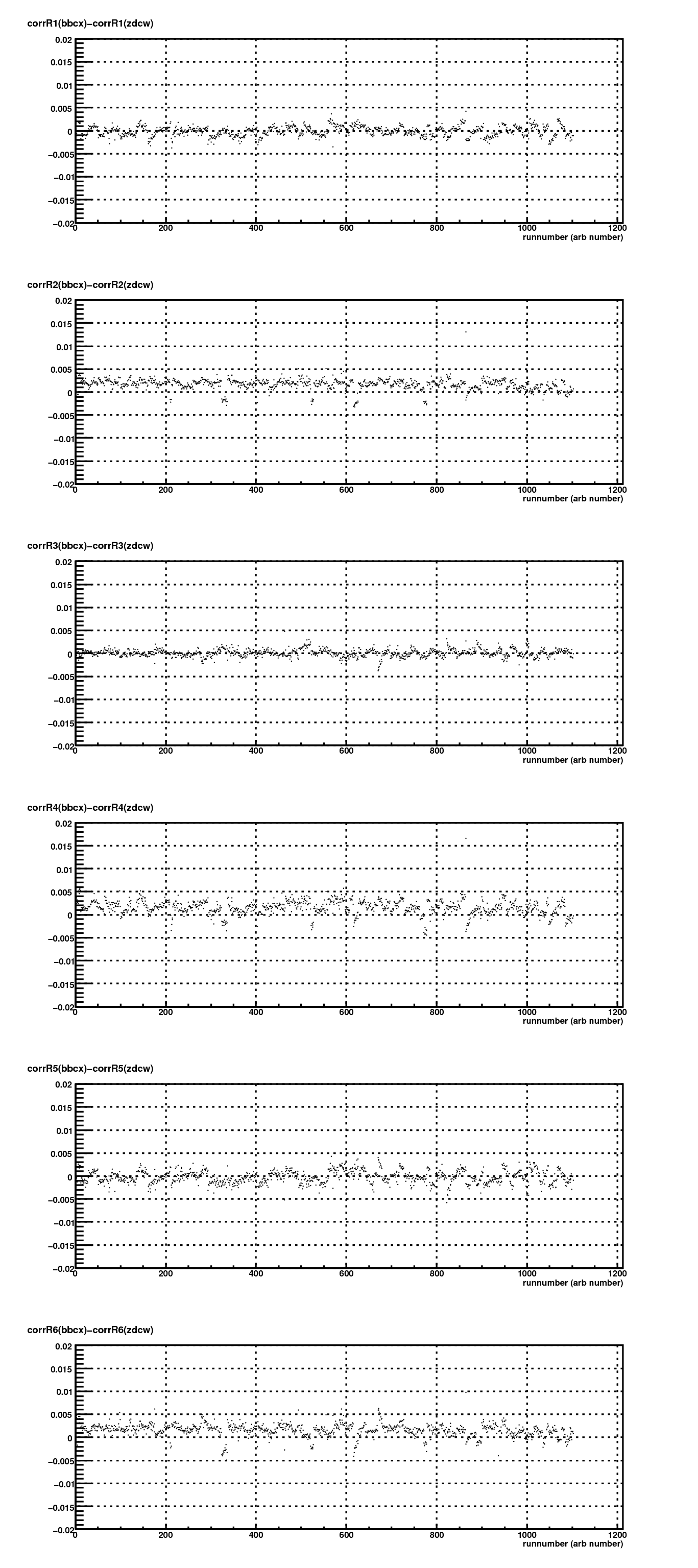
Okay, now things start to get interesting. There are a number of conclusions that you can draw from this data. First, the accidentals/multiples corrections are inadequate in their current form in we want to attain the sought after precision. Second, there is a different shift in the delta-R's for the different zdc scalers : zdcx sees the usual shifts, zdce sees NO shifts for any of the delta-R's, and zdcw sees positive shifts in R2, R4, and R6. You will also notice, curiously, that there are a few fills in the run where the sign of this effect flips. This could provide us a correlator to possibly figure out whats going on with this shift. From looking at the spread caused by the inadequate accidentals/multiples corrections, it would appear that these shifts are not due to inadequate corrections, but really from something physical and they are persistent throughout the entire run regardless of rotator tuning, mag field reversal or anything else.
So to summarize there are two problems in the data : there is some polarization effects (looks to be coming from the yellow beam if my understanding of the STAR geometry is correct) and there is still residual noise from inadequate accidentals/multiples corrections. But there doesn't appear to be any spin dependence to the zdce scalers which means that they can be used as a check on the corrected bbcx scalers so that the bbcx scalers can be verified and used for the calculation of the relative luminosity (provided the luminosity dependence can be minimized further).
In this blog I won't theorize as to the cause of the shifts in the zdcx and the zdcw, but I will look further into the accidentals/multiples. First here is a plot of the 7 logical configurations of the scalers (both bbc and zdc) integrated over the entirety of run9.
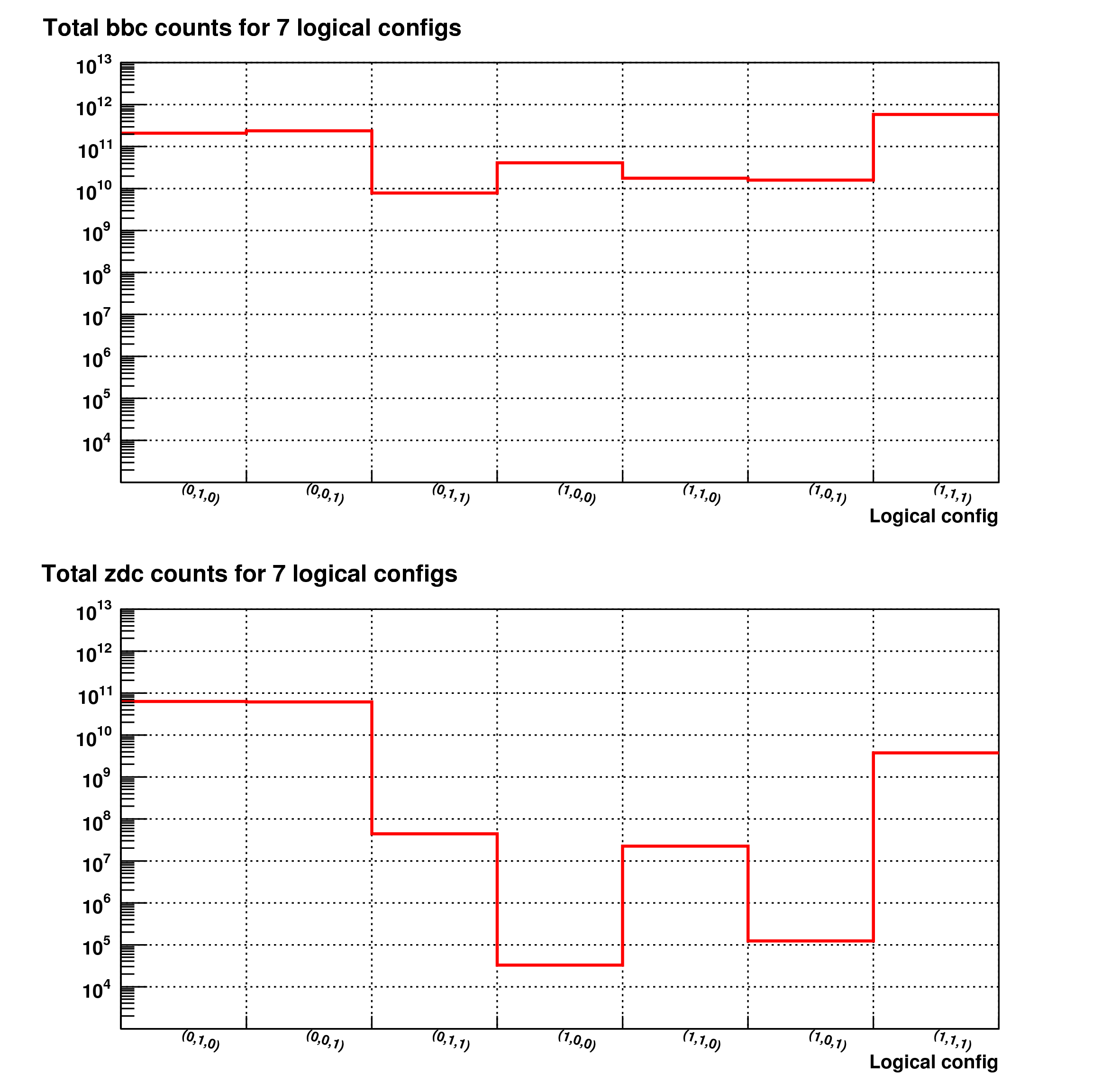
The zdc scalers appear to make sense to me; the zdce and zdcw are ~equal and have a higher rate than the zdcx. There are some anomalies in the other logical configs. The 0,1,1 anomaly is due to the zdcx being that configuration earlier in the run and this not being corrected for this plot, so there is no problem there. All the other anomalies are less than 1% effects on the total rate and as long as they are not spin dependent (needs to be investigated) there is no real problem.
The bbc scalers do not currently make sense to me. The bbce and bbcw scalers are approximately equal, but why are they less than the bbcx scalers? I expect this to occur at some poin in the rates, but at 1% possible saturation? Also all the anomalies are much bigger than in the case of the zdc scalers. I am not sure why they are so big. I would guess this is due to a bad timing in of some of the triggers and again this may not be a problem, but it would be nice to understand this better.
So there appear to be real problems in looking at the bbc scalers (why are the singles less than the coincidences?). This could be a source of part of the remaining luminosity dependence that is seen in the delta-R plots above, but this needs to be investigated more. Another source of the residual luminosity dependence is the fact that the corrections were applied on run-by-run basis where the change in the instantaneous luminosity is significant and these "average" corrections are really not good enough. This later idea will be investigated in a future blog.
************************************************************************************************************************************************************************
Hal requested a few more plots as a check. Plotted below are the "normalized" bunch crossing patterns, where you have bbcx(P?)/(bbcx(P1)+bbcx(P2)+bbcx(P3)+bbcx(P4)) and the same thing for zdcx. What you can see is that there is no bunch crossing number dependence in these plots outside of the abort gaps which show odd behavior.
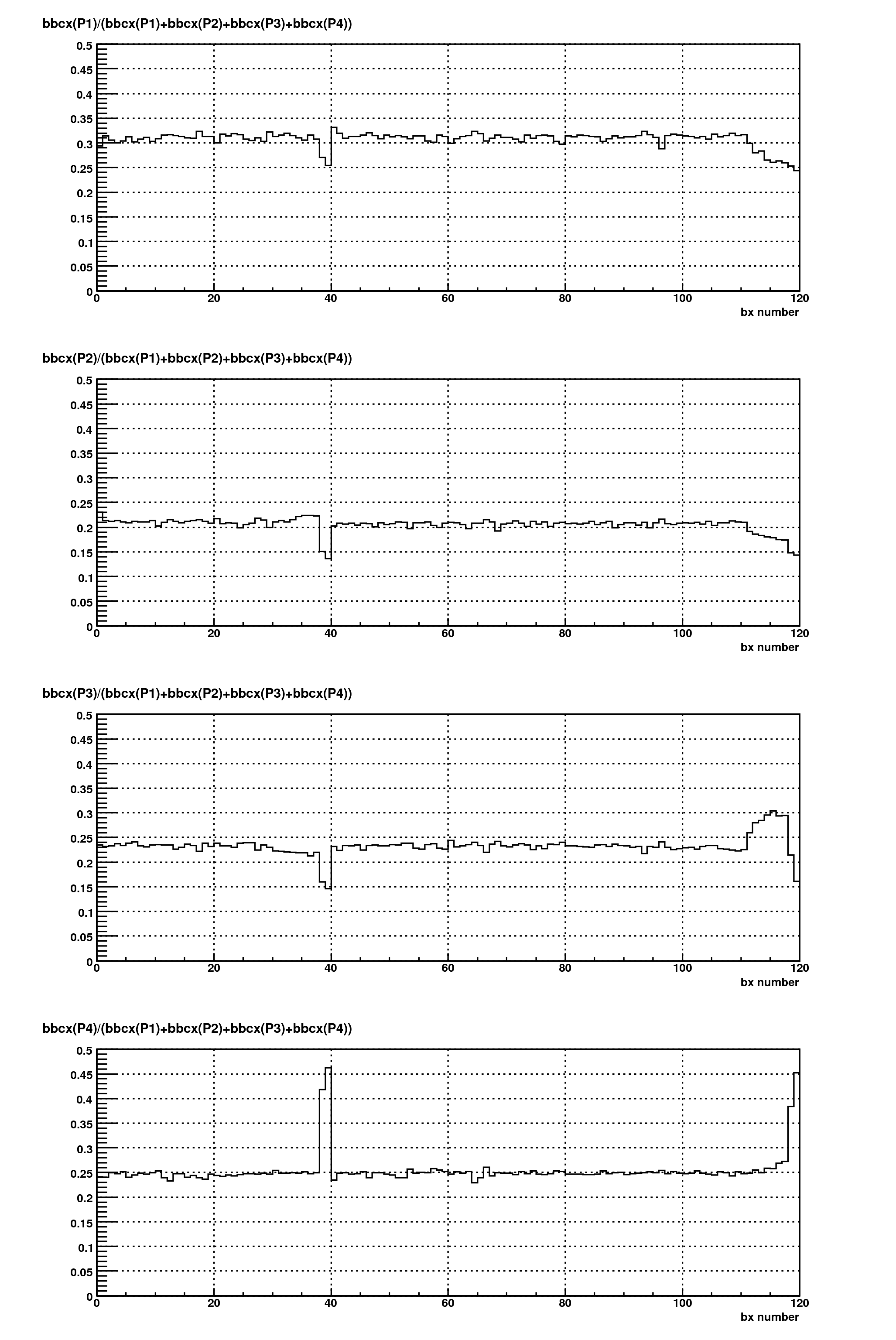

************************************************************************************************************************************************************************
Some other plots to show that things are not quite right and still not understood and that it is likely that the there is more than one cause of the odd luminosity (or time in fill) dependence to these quantities.

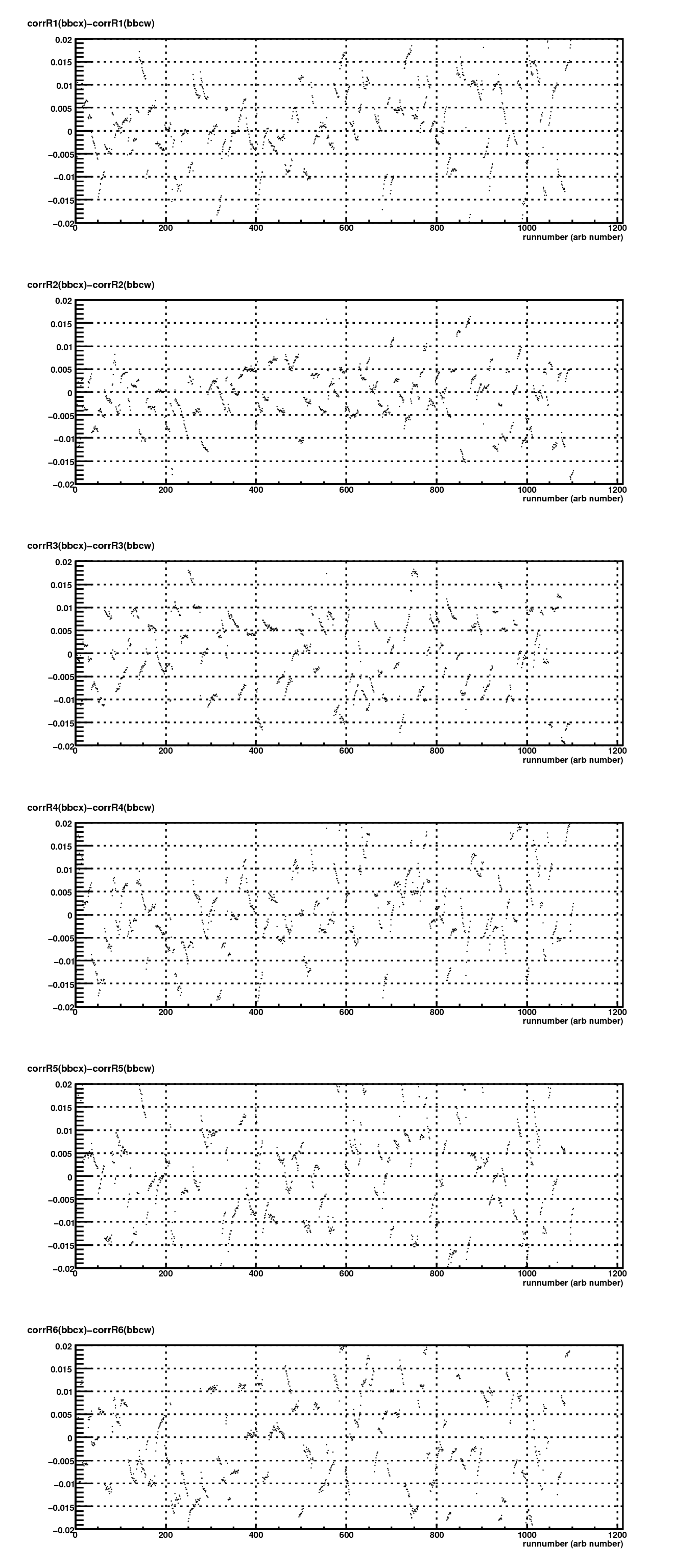
Now for some observations about the delta-R's with the bbc singles scalers. Clearly there is some residual luminosity dependence. The source of the dependence is still not clear. This will be investigated further in future blogs. There are also multiple cases where the at the end of the fill the delta-R's are not near the zero mark (they are offset from zero). It is unclear what the source of this offset it and if it is luminosity dependent or not.
For some level of completeness here are the delta-R's between the zdcx and the zdc singles.
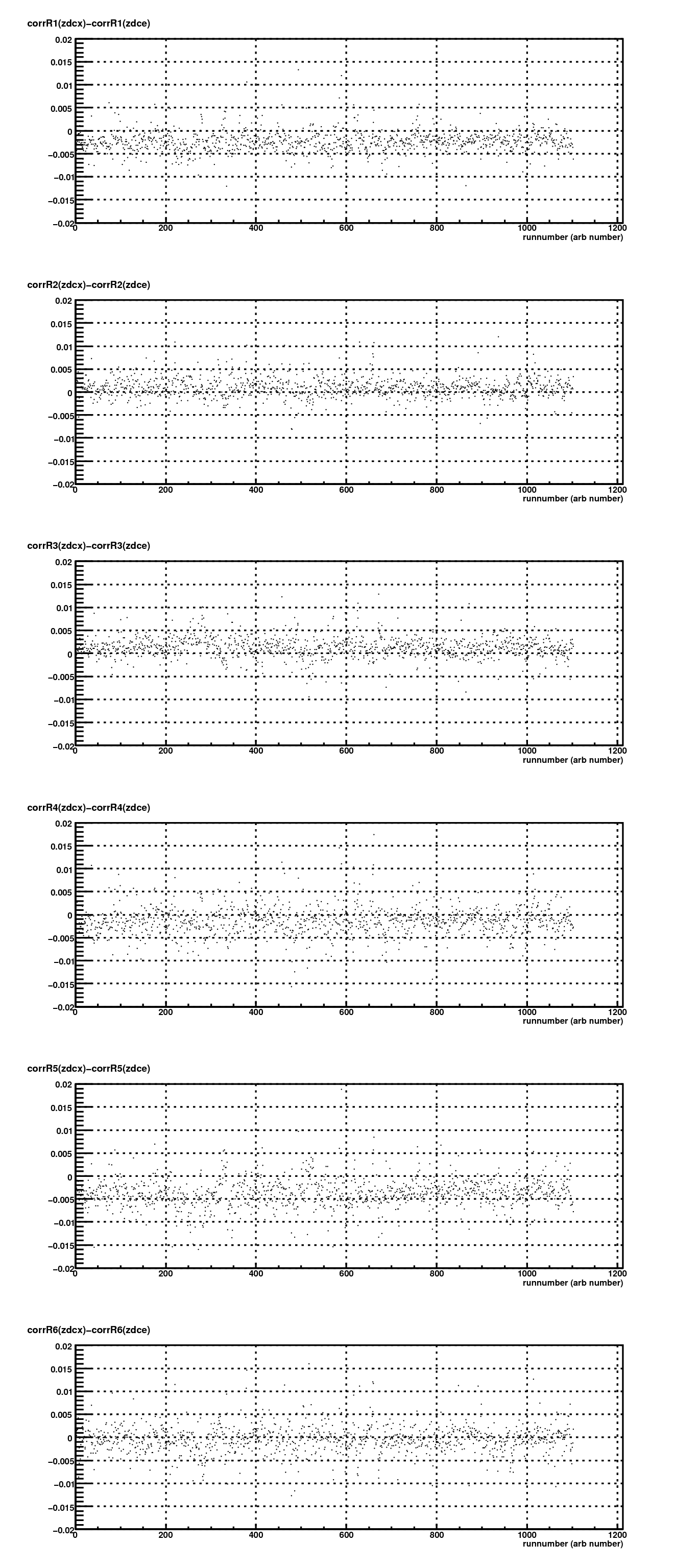
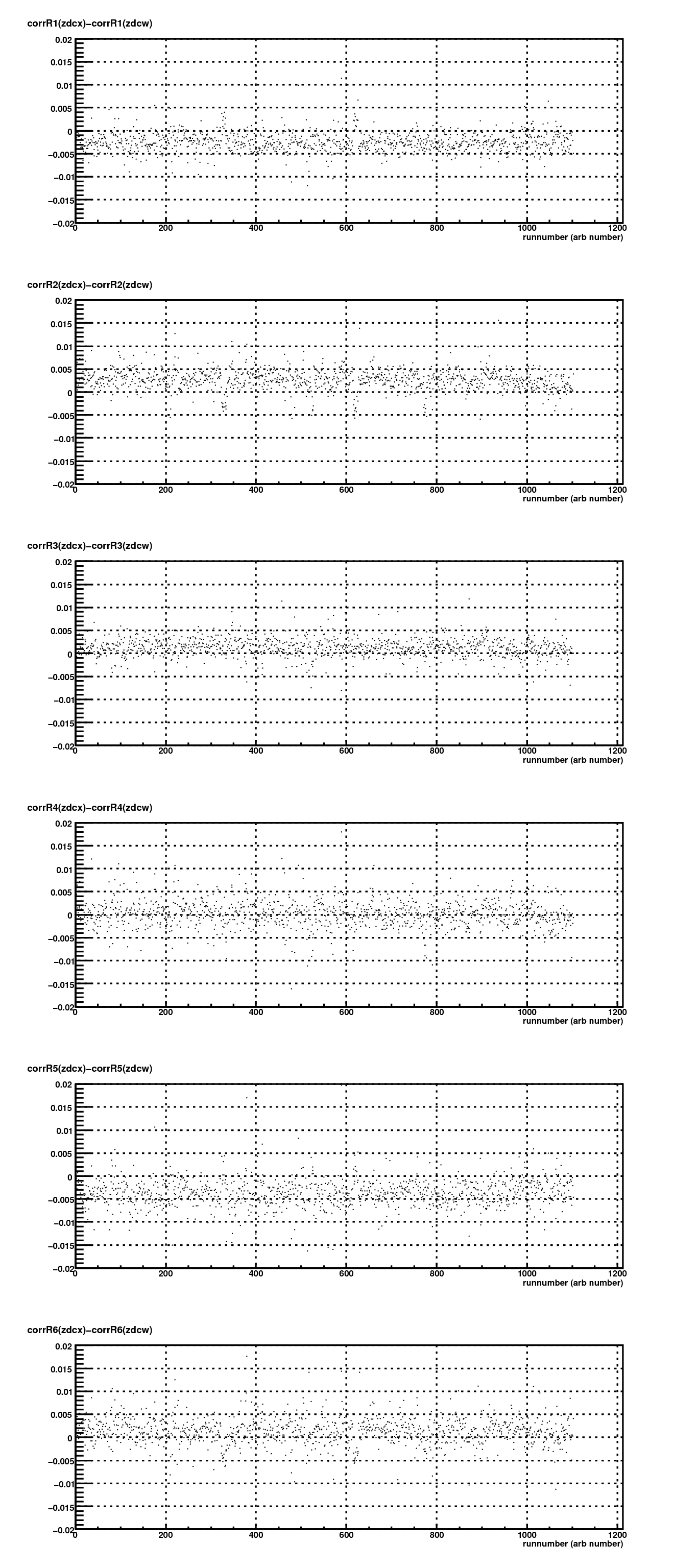
************************************************************************************************************************************************************************
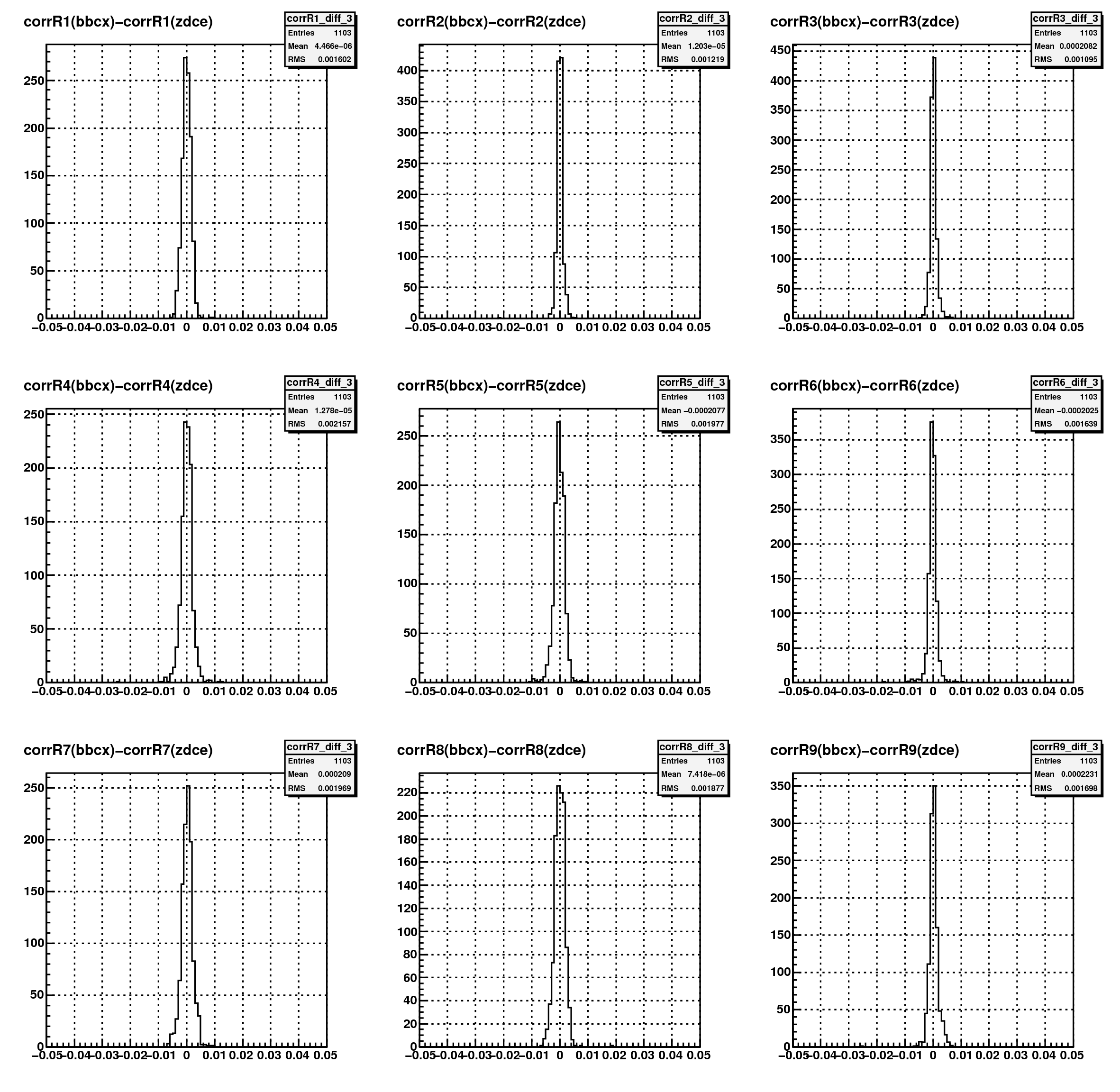
- seelej's blog
- Login or register to post comments
